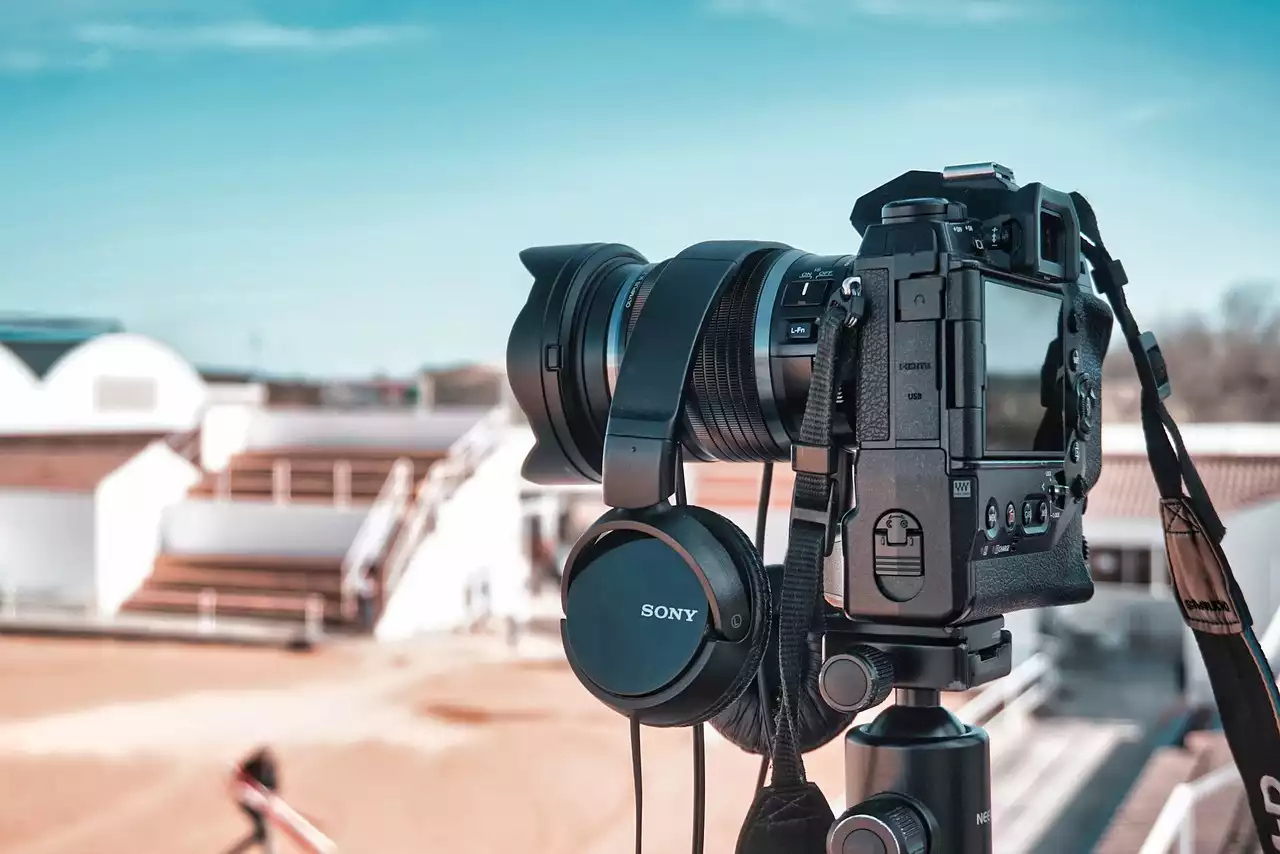The power of video content
Video content is a powerful tool that can help you connect with your audience on a deeper level. It allows you to tell a story, showcase your brand's personality, and engage with your audience in a way that other forms of content simply can't match. According to a recent study, video content is expected to account for 82% of all internet traffic by 2022. That's a staggering number that highlights just how important video has become in the world of digital marketing.
One of the key benefits of video content is its ability to capture attention. With so much content vying for our attention online, it can be difficult to stand out. However, video content has been shown to be more engaging and memorable than other forms of content, making it a valuable tool for businesses looking to make an impact online.
In addition to its ability to capture attention, video content can also help build trust with your audience. By showcasing your brand's personality and values, you can create a connection with your audience that goes beyond just selling a product or service. This can help build long-term relationships with your customers and increase loyalty to your brand.
Understanding your audience
Before you start creating your video content, it's important to understand your audience. Who are they? What are their interests? What challenges do they face? By answering these questions, you can create content that resonates with your audience and addresses their needs.
One way to gain insights into your audience is to create buyer personas. These are fictional representations of your ideal customers and can help you understand their motivations, pain points, and preferences. By creating buyer personas, you can tailor your video content to address the specific needs of your target audience.
Another way to understand your audience is to conduct surveys or focus groups. This can provide valuable feedback on what types of content your audience is interested in and how they prefer to consume it. By gathering this information, you can create video content that is more likely to resonate with your audience and drive engagement.
Defining your message
Once you understand your audience, it's important to define your message. What do you want your video to communicate? What action do you want your audience to take? By defining your message, you can create a video that is focused and impactful.
One of the keys to creating a compelling message is to tell a story. Stories have been used to communicate ideas and engage audiences for thousands of years. By weaving a story into your video content, you can capture your audience's attention and create an emotional connection with them.
Another important aspect of defining your message is to focus on the benefits of your product or service. Instead of simply listing features, focus on how your product or service can solve a specific problem or improve your customer's life. By highlighting the benefits, you can create a more persuasive message that resonates with your audience.
Choosing the right video format
Once you have defined your message, it's time to choose the right video format. There are many different types of video formats to choose from, each with their own strengths and weaknesses. Some of the most popular video formats include:
- Explainer videos: These videos are designed to explain a product or service in a simple and engaging way.
- Product demos: These videos showcase a product in action and highlight its features and benefits.
- Testimonials: These videos feature satisfied customers sharing their experiences with your product or service.
- How-to videos: These videos provide step-by-step instructions on how to use a product or service.
When choosing the right video format, it's important to consider your audience and the message you want to communicate. For example, if you are targeting a younger audience, you may want to use a more humorous or lighthearted format, while a more serious or technical message may require a more straightforward approach.
Creating a storyboard
Once you have chosen the right video format, it's time to create a storyboard. A storyboard is a visual representation of your video that outlines the key scenes and shots. This can help you plan your video and ensure that it flows smoothly and effectively communicates your message.
When creating a storyboard, it's important to consider the pacing of your video. A video that moves too quickly can be overwhelming, while a video that moves too slowly can be boring. By creating a storyboard, you can ensure that your video has a clear and effective structure that engages your audience from start to finish.
Scripting your video
With your storyboard in hand, it's time to start scripting your video. A well-written script can make all the difference in creating a video that resonates with your audience. When scripting your video, it's important to keep in mind your audience and the message you want to communicate.
One of the keys to scripting a successful video is to keep it concise and focused. Avoid using jargon or technical language that may confuse your audience. Instead, focus on clear and simple language that communicates your message effectively.
Another important aspect of scripting your video is to include a call to action. This is a specific action that you want your audience to take, such as visiting your website or subscribing to your newsletter. By including a call to action, you can increase engagement with your audience and drive results for your business.
Filming and editing
With your script in hand, it's time to start filming and editing your video. This is where the right equipment and editing software can make all the difference. When choosing equipment, consider factors such as lighting, sound quality, and camera stability. High-quality equipment can help ensure that your video looks and sounds professional.
When it comes to editing, there are many different software options to choose from. Some popular options include Adobe Premiere Pro, Final Cut Pro, and iMovie. When choosing editing software, consider factors such as ease of use, functionality, and cost.
Adding music and sound effects
Music and sound effects can help enhance the emotional impact of your video and create a more engaging experience for your audience. When choosing music and sound effects, it's important to consider your audience and the message you want to communicate.
One way to find music and sound effects is to use royalty-free libraries such as AudioJungle or Epidemic Sound. These libraries provide a wide range of high-quality music and sound effects that can be used in your video without worrying about copyright issues.
Optimizing your video for SEO
Once your video is complete, it's important to optimize it for SEO. This can help improve its visibility and reach on search engines such as Google and YouTube. Some tips for optimizing your video for SEO include:
- Using relevant keywords in your video title, description, and tags.
- Adding a transcript of your video to the description.
- Encouraging engagement by asking viewers to like, comment, and share your video.
- Embedding your video on your website or blog.
Promoting your video
Promoting your video is an important step in driving engagement and increasing its reach. There are many different ways to promote your video, including:
- Sharing it on social media platforms such as Facebook, Twitter, and LinkedIn.
- Running ads on social media or search engines.
- Emailing it to your subscribers or customers.
- Embedding it in blog posts or other content.
Measuring success with analytics
Finally, it's important to measure the success of your video using analytics. This can help you determine what worked well and what could be improved in future videos. Some metrics to track include:
- Views: How many people viewed your video?
- Engagement: How many likes, comments, and shares did your video receive?
- Click-through rate: How many people clicked on a call to action in your video?
- Conversion rate: How many people took a desired action, such as making a purchase or filling out a form?
By tracking these metrics, you can gain valuable insights into the effectiveness of your video content and make improvements for future videos.









